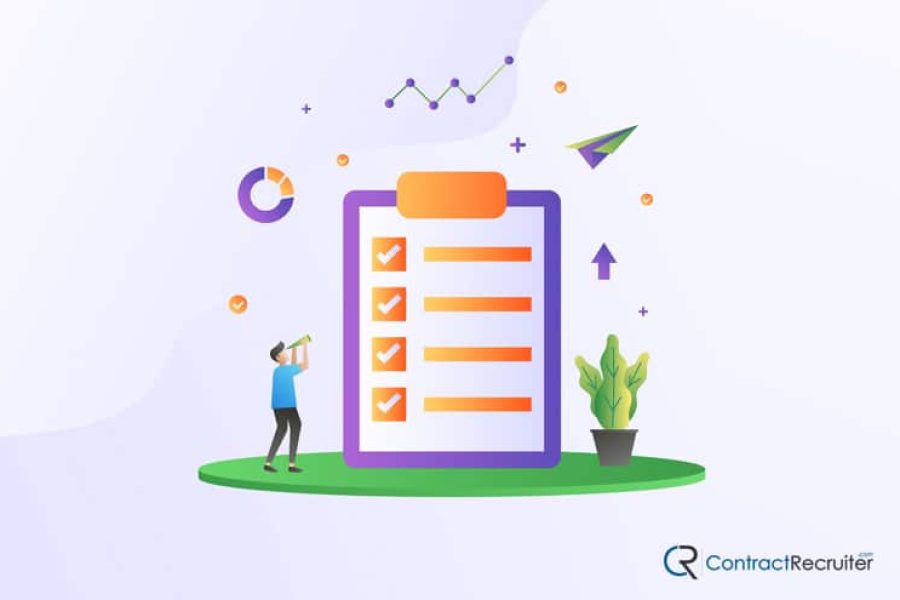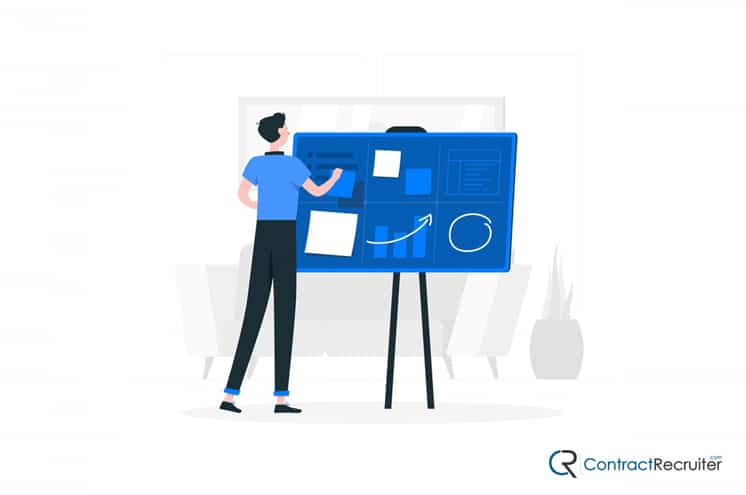Your job title is important. It’s important as an indicator of where you stand on your career path within your company. It’s important when communicating with others outside of your organization. It’s important if you leave your company, so the hiring managers at other companies know what role you held.
There are, though, quite a few HR roles within the overall human resources field. There’s also a lot of overlap between them, and sometimes the definition will be different between two different companies. Add to this the all-too-common phenomenon of increasing responsibilities without increasing titles, roles, certifications, or pay, and you have a very muddled area of discussion.
What we’ve done here is put together a list of HR roles, from the bottom-rung intern to the high-end director, with definitions to try to clear the air. While the exact definition of a role tends to be flexible and might not match your role – or the role you’re applying to take – it should be within the realm of possibility.
Let’s dig into it!
Entry Level Positions
Entry-level positions are roles within the HR department that don’t need much or any previous experience. They’re not tasked with making high-level decisions but instead deal with the day to day minutia of managing the company from the inside. They handle administrative tasks and labor. Employees in these roles are expected to climb the ladder and be replaced relatively quickly, so they don’t tend to gain much institutional knowledge in the given role.
HR Intern – The intern is the bottom rung of the HR ladder, the paid or unpaid assistant who does everything from fetching coffee to set up meetings. They tend to do the menial administrative tasks that the higher-ups don’t want to do, usually because they’re tedious, time-consuming, and boring. Interns are there to gain experience and insight into the HR department and are generally temporary positions lasting a year or less.
HR Assistant – The HR Assistant role is very similar to the intern role, except they’re paid, and they’re long-term. An assistant tends to work directly with someone higher up in the HR ladder, handling day to day administrative tasks, but with less of the sheer grunt work of the intern. It’s the lowest rung of the HR ladder that is expected to stick around and grow within the company, rather than leave for further schooling or greener pastures.
HR Trainee – Trainees are HR employees who are being specifically trained for mid-level roles, usually, through shadowing or one-on-one time with the person they’re going to either work with or replace. Trainees are entry-level but may also have some prior experience as a general assistant or intern.
HR Associate – The associate is similar to the assistant, but there may be some connotations of a long-term role at the entry-level, as opposed to the quick mobility of the assistant. Associates are the rank and file, the generalists who handle whatever tasks come their way, but who aren’t making managerial decisions.
HR Coordinator – Rarely do you see “HR Coordinator” as a role; rather, coordinators are generally administrative assistants that perform HR-related tasks. Coordinators help smooth the path between low-level employees, managers, and directors, and help with filing employee documentation, performing employee actions, sending notices to employees, and preparing materials for meetings.
Recruiter – Recruiters are tasked with the day to day labor of recruiting for the company. They review and filter resumes and applications, they manage job postings, they schedule interviews, and they send cold contacts to passive candidates. They’re the first line of defense for the recruiters higher up the chain who make the actual hiring decisions.
Analyst – Analysts tend to have an interesting role as an information broker. They deal in information and high-level thought and analysis, though they may not be empowered to make decisions based on that information. They take company data, particularly when it relates to employees, and analyze it to develop reports for the higher-level employees and directors to review. There are analysts at all levels, though the upper-level analysts tend to be outside consultants more than internal officers.
Staff Coordinator – Staff coordinators are the upper crust of the low-level employees in the HR department. They’re on the verge of reaching mid-level management and may be considered managers of the interns, trainees, and individuals in the HR department. They help with recruiting, screening, and new hire orientation, but still have to do a lot of the daily grunt work the upper-level positions can delegate.
Learn More About Our Recruitment Services
Mid-Level Positions
Mid-level positions in HR tend to be managers, team leaders, and specialists in specific roles. In small companies, these can be considered upper-level positions, especially in cases where an HR department is only a small handful of people. They’re in charge of other HR staff, but beholden to the upper-level managers and directors for the high-level decisions.
Manager – HR Managers are a flexible mid-level role. They’re the people who manage the lower-level people, making overview decisions for the department but without the total perspective of the whole company that a director would have. HR managers act as the buffer between the HR associates who do the work, and the HR directors who guide the direction of the company. They’re expected to be good at communication, leadership, relationship building, and critical thinking.
Sourcer – Sourcers are the high-level version of recruiters. They’re the managers who guide overall recruitment efforts and who put forth the effort on passive candidates to target, filter, and negotiate with them directly. Sourcers tend to be more aggressive with recruitment, but are empowered to make more decisions about that recruitment.
Administrator – Like coordinator, administrators are a mid-to-upper-level role that guides the overall direction of specific efforts within HR. You’ll see HR Administrators as overall managers and decision-makers, but you’ll also see specific niche administrators. A benefits administrator makes upper-level decisions about benefits and can work with outside companies to organize those benefits. A training administrator helps set up and manage training for both HR employees and employees in other roles within the company and so on.
Trainer – Trainers are a specialist within HR who focus on, as you might expect, training. They set up training procedures, manage an internal knowledge base and onboarding process, and help connect new hires with the people who can answer their specific questions. They take the people the hiring managers and sourcers recruit, and turn them into full-fledged employees.
Generalist – HR Generalists are the associates of the mid-level HR department. They do a little bit of everything, they don’t specialize in anything, and they serve as the overall rank and file of HR. Generalists are often on a training path to become specialists in one role or another, though they may end up leaving the company to take that role at another if there’s no clear path of mobility within their own.
HR Information Specialist – The information specialist is the higher-tier version of the analyst. Information specialists deal with all of the high-level analytics and reporting and tend to report directly to the upper-level management with their findings. Information specialists may also be tasked with auditing and compliance overviews, and guide the analysts on what they’re doing.
Upper-Level Positions
Higher-level positions are generally most common in large companies with large HR departments, but their roles also work in smaller companies. Responsibilities and salaries can vary a lot here depending on the size of the organization. The HR director at a small company might be the equivalent of a middle manager at a large enterprise, for example.
HR Manager – HR Managers are the lowest of the high-end HR employees. They guide the overall direction of the department, they’re responsible for problem-solving, and the interface between the middle managers and the VP-level directors. A department manager may only have one or two people above them before the CEO, or they may be interchangeable with the VP in a smaller organization.
Specialist Manager – Specialist managers within HR have specific titles that reflect their areas of expertise. You may have a benefits manager, a training manager, an information manager, a compliance manager, a recruiting manager, and so on. Specialist managers are the upper management for a larger HR department, each in control of their own sub-department, and reporting to the overall director of HR.
Talent Acquisition Manager – The recruiting manager is a specialist manager who guides and oversees hiring for the organization. They work with managers of other departments to figure out what the company needs in their employees. They also work with the tools and outside companies the business uses to recruit.
Business Partner – Business partners tend to be closer to consultants than managers in the HR world. They work both within and outside of the company to build relationships and business plans that guide the direction of the company. They form policies, oversee enforcement, or interface with a more stand-alone HR services center for an organization.
Brand Manager – Brand managers for a company are part of HR, but could also be considered part of marketing. They are communications specialists and they strive to manage how a brand is represented, both within the company and without. They can help with overall company branding, intellectual property management, and public relations, among other things.
HR Director – The overall director of HR is typically the highest level HR employee who oversees HR directly. They are either synonymous with the VP of HR or the C-levels (in smaller companies) or are the direct report and highest level beneath those roles. Their specific role and job duties depend on the company itself. HR directors may also be regional directors for large and distributed companies, reporting to an overall company-level director.
Specialist Director – Specialist directors are typically only present in large enterprises. They’re directors of various sub-sections of HR, such as a recruiting director or a benefits director. In large companies with tens of thousands of employees or more, where a single specialty of the HR department could be dozens or hundreds of people, the specialist director serves as the interface between that section of the department and the overall director of HR.
VP of HR – The Vice President of HR is the one-step-below the overall president of the company and is synonymous with the C-level HR officer. Again, their specific duties and considerations depend on the size and structure of the company beneath them. In large companies, the VP is often the one who manages the various regional directors.
Chief Diversity Officer – A relatively new position, the CDO or Chief Diversity Officer is responsible for upper-level organizational efforts to ensure diversity and equality amongst the workforce. They handle overviews, auditing, and guidance for equitable benefits distribution, bias-free hiring practices, non-discrimination overviews in management, and other initiatives. They may report to the CHRO or to the CEO directly and could be part of the overall board of directors, depending on the organizational structure of the company.
Chief Human Resource Officer – A part of the board and a direct report to the company CEO, the chief HR officer is the head of all HR for the company. They make high-level decisions, guide the overall efforts of the department, and provide updates and reports to the CEO and board of directors. This role may also be known as the Chief People Officer or CPO.
Other Titles
There are easily dozens if not hundreds of other specific titles for HR employees within an organization. Lists like this one will list out specialist versions of roles above, alternate names for certain roles, and roles that have been more or less created to give managers different, more important-sounding names.
Different companies may name some roles in different things, though the responsibilities are the same. This is why it can be difficult to compare positions between companies, and why it’s important to keep a list of duties and responsibilities on hand for such comparisons.
Conclusion
It’s important to recognize that a role can be called whatever the company wants to call it. None of these definitions is truly set in stone, and it can vary a lot depending on the company, the region, the size of the organization, and even the personal whims of the C-levels involved. That’s not a bad thing, it simply means direct comparisons can be difficult.






